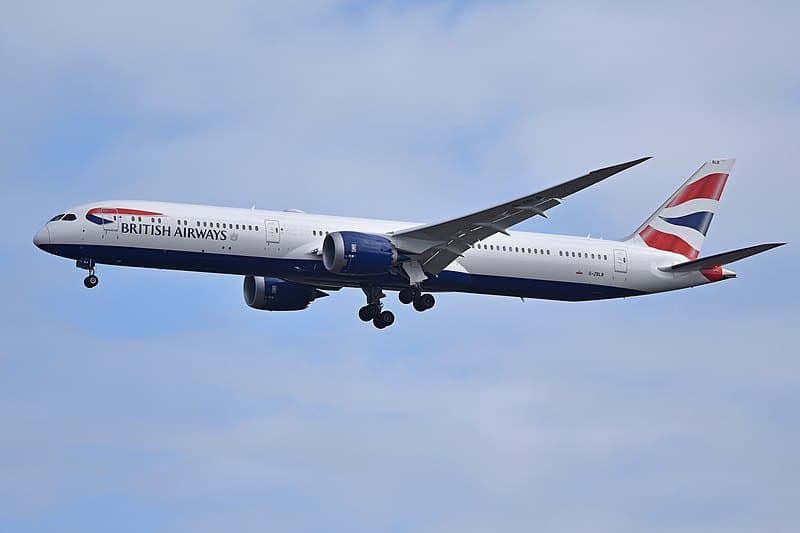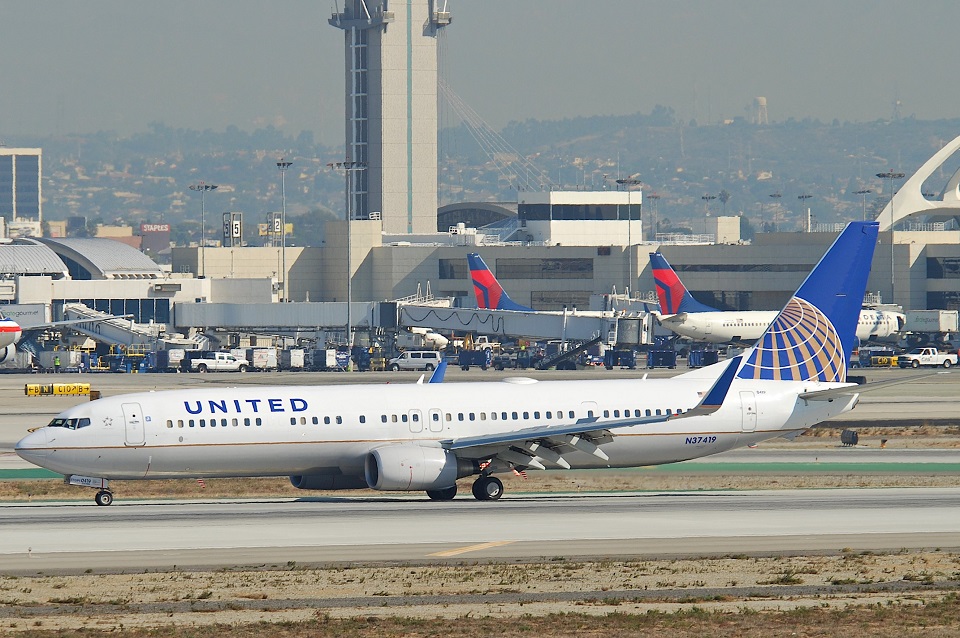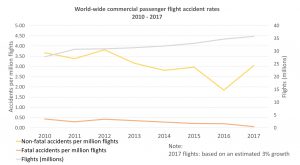Aviation
Airline safety: 2017 was safest year in aviation history.

According to Top70 reports
The past year has been another exceptionally good year for civil aviation safety. With only two fatal accidents to passenger airliners, both involving small turbo-prop planes, 2017 was much better than could reasonably (and statistically) be expected, and was again better than last year’s remarkable performance.
However, the risks to civil aviation do remain high, as the seriousness of some of the non-fatal accidents shows
Airlines recorded zero accident deaths in commercial passenger jets last year, according to a Dutch consulting firm and an aviation safety group that tracks crashes, making 2017 the safest year on record for commercial air travel.
2017 IN REVIEW
Our to70 Civil Aviation Safety Review examines accidents only to larger passenger aircraft commonly used by most travellers. (See our criteria in the Note below.) We include all causes, whether technical failure, human error or unlawful interference. In 2016, there were 71 civil aviation accidents of which six resulted in fatalities. This year, 2017, the number is even lower; 111 accidents, two of which included fatalities. There were no accidents in 2017 related to unlawful interference. A total of 13 lives lost in two regional airline accidents:
- An Embraer Brasilia[1] lost control in flight in Angola after, reportedly, suffering an engine failure, and
- A Czech-built Let 410[2] crashed on landing at Nelken in Russia.
An estimated three percent growth in air traffic for 2017 over 2016 means that the fatal accident rate for large aeroplane in commercial air transport is again reduced; this time to 0.06 fatal accidents per million flights. That is a rate of one fatal accident for every 16 million flights.
With so few fatal accidents to examine, it is worth remembering that there were also several qute serious non-fatal accidents in 2017. A number of engine related accidents occurred, including the spectacular loss of the engine inlet fan and cowling on an Air France A380[3]. That the aeroplane continued to operate safely to a diversion airport and was then flown home for repair on three engines says a lot about the robustness of the aeroplane. In addition to the non-fatal accidents, there are a number of notable events that have been excluded from the statistics. Examples of these accidents include:
In comparison, there were 16 accidents and 303 deaths in 2016 among airliners.
The deadliest incident last year occurred in January when a Turkish cargo jet smashed into a village in Kyrgyzstan as it tried to land at a nearby airport in dense fog, killing 35 on the ground and all four onboard.
The Aviation Safety Network said 2017 was “the safest year ever, both by the number of fatal accidents as well as in terms of fatalities.”
Over the last two decades aviation deaths around the world have been steadily falling. As recently as 2005, there were 1,015 deaths aboard commercial passenger flights worldwide, the Aviation Safety Network said.
The United States last recorded a fatal airline passenger jet crash in February 2009, when Colgan Air Flight 3407 crashed short of the runway in Clarence Center, New York, killing 49 onboard and one person on the ground.
In 2016, 412 people were killed in the United States in aviation accidents – nearly all in general aviation accidents and none on commercial passenger airlines.
The last fatal passenger jet airliner accident worldwide took place in November 2016 near Medellin, Colombia and the last commercial passenger aircraft crash to kill more than 100 people occurred in October 2015 in Egypt.

Aviation
Air India’s B747 Makes Its Final Journey, Waving Farewell to Fans

In a poignant moment marking the end of an era in aviation history, Air India’s iconic Boeing 747 aircraft, affectionately known as the ‘Queen of the Skies,’ embarked on its ultimate journey from Mumbai’s international airport.
The departure, bound for Plainfield, USA, where it will undergo dismantling and part-stripping under the ownership of American AerSale, signals the closure of a storied chapter for the airline.
Once revered for transporting dignitaries ranging from prime ministers to presidents, the Boeing 747 has etched itself into aviation lore. Yet, as airlines worldwide pivot towards more contemporary and cost-effective aircraft, Air India’s decision to bid farewell to its remaining Boeing 747s reflects the pragmatic realities of today’s aviation landscape.
The sale of these majestic planes to AerSale represents a strategic move by Tata Group, Air India’s new custodian, towards optimizing operational efficiency and embracing modern industry standards. Out of the four aircraft sold, two will be repurposed into freighters, while the remaining pair will be meticulously disassembled to salvage valuable components.
The final flight from Mumbai witnessed a touching tribute as pilots performed a traditional ‘Wing Wave,’ symbolizing the conclusion of the Boeing 747‘s distinguished service with Air India. This poignant gesture encapsulates the deep sentiment attached to the aircraft’s departure and its significant contribution to the airline’s legacy.
As the Boeing 747 embarks on its journey to Plainfield, USA, nostalgia permeates the air, evoking memories of its maiden flight on March 22, 1971. Over five decades, Air India operated a total of 25 Boeing 747s, each leaving an indelible mark on the annals of aviation history.
Middle East
British Airways Resumes Daily Flights to Abu Dhabi, After 4-Year hiatus

British Airways made its way back to Abu Dhabi, landing at Zayed International Airport. Following a four-year break in service, both crew and passengers were greeted with enthusiasm.
In the summer of 2024, British Airways plans to launch a daily route, utilising a Boeing 787-9, from London Heathrow to Abu Dhabi. The new route enhances ties between the UAE and the UK and expands vast worldwide network, catering to passengers who may be visiting friends and family or travelling for business.
Arriving in Abu Dhabi at 08.30+1, flight BA073 to Abu Dhabi leaves London Heathrow at 22.25. Departing at 10.10 and landing at London Heathrow at 15.20 is the inbound flight (BA072).
The chief executive officer and managing director of Abu Dhabi Airports, Elena Sorlini, stated: “We are delighted to welcome British Airways to Zayed International Airport. Their daily schedule is expected to improve connectivity and stimulate travel and business.” Visitors may experience the dynamic capital of the United Arab Emirates like never before at our brand-new, award-winning, state-of-the-art terminal, where they will be welcomed with the best kind of Emirati hospitality.”
Flight schedule:
| London Heathrow (LHR) to Zayed International (AUH)All times are local | ||||||
| Season | Flight number | Departing LHR | Arriving AUH | Flight number | Departing AUH | Arriving LHR |
| Summer ‘24 | BA73 | 22:25 | 08:30+1 | BA72 | 10:10 | 15:20 |
| Winter ‘24 | BA73 | 22:25 | 09:30+1 | BA72 | 11:10 | 15:20 |
Aviation
FAA investigation: Passenger seated in Captain’s seat inside cockpit at cruising altitude

A viral video capturing a startling moment aboard a United Airlines charter flight from Denver to Toronto has triggered a federal investigation.
The footage, initially shared on social media by Hensley Meulens, the hitting coach for the Colorado Rockies baseball team, depicts a member of the coaching staff seated in one of the pilot seats while the aircraft was in mid-flight.
In his caption, Meulens expressed gratitude to the captain and first officer for allowing him this unusual experience. The video, filmed by another passenger, reveals the cockpit door open, and at one point, a third passenger briefly enters the flight deck. Alarmingly, during this time, the captain was absent from the cockpit.
Despite the flight being a private charter operated by United Airlines, company and Federal Aviation Administration (FAA) regulations strictly prohibit passengers from entering the cockpit during flight or leaving the flight deck unsecured.
United Airlines swiftly responded, expressing deep concern over the incident. A spokesperson emphasized that the video depicted an unauthorized person in the flight deck at cruising altitude with the autopilot engaged, constituting a clear violation of safety and operational policies.
The FAA confirmed that it is actively investigating the incident, highlighting that unauthorized access to the flight deck during flight is a violation of federal regulations. The agency assured that it is taking the matter seriously and will conduct a thorough examination to ensure compliance with aviation safety standards.























